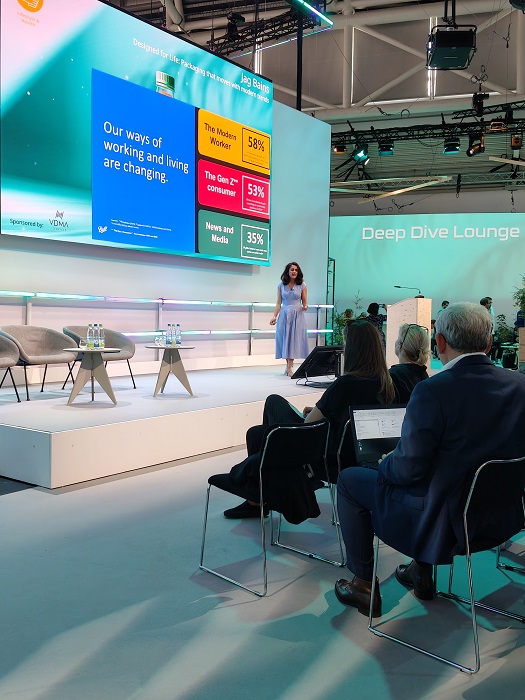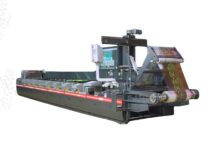During a presentation at Liquidrome Wave Stage at drinktec 2025 in Munich, Jag Bains of Ball Corporation outlined how evolving consumer behavior, sustainability goals, and changing lifestyle trends are shaping the global beverage packaging industry. Speaking under the theme ‘Design for Life,’ Bains discussed the transformation of consumption habits, the growing appeal of aluminium packaging, and the enduring adaptability of the beverage can, which marks its 90th year in 2025.
Bains, who has spent two decades in the FMCG sector before joining Ball six years ago, said the packaging industry is navigating major changes in consumer expectations. “Wellness, sustainability, duality of spending, artificial intelligence, and personal storytelling are the five key influences on modern lifestyles,” she noted. Social media, she added, is redefining how consumers, particularly younger generations, view health, identity, and value.
Gen Z, now numbering 2.1 billion globally, has become a central force in shaping trends. Bains said this generation relies less on traditional search engines, instead using social platforms such as Instagram and TikTok to research and verify purchases. “The modern consumer’s mindset is data-driven, image-conscious, and story-led,” she said, adding that beverage brands must now design products that reflect personal wellness, sustainability, and self-expression.
Founded in 1880 by five brothers, Ball Corporation is the world’s largest supplier of beverage cans, employing 16,000 people across 50 countries with 60 manufacturing plants. The company’s portfolio spans four key segments—single-use, refillable, personal and home care, and events and on-the-go applications.
According to Bains, the global drinks market, valued at about US$3 trillion, continues to expand across categories including water, carbonated soft drinks (CSDs), beer, energy beverages, and ready-to-drink cocktails.
Within this growth, cans have consistently outperformed overall beverage growth. Before the pandemic, global demand for cans rose 3.2% compared with 1.9% beverage growth, and during Covid-19, this gap widened as consumers shifted to home consumption and multipack formats.
“Post-pandemic, cans have maintained strong momentum,” she said. In Europe, demand for cans has grown 3.5% compared with beverage growth of 1.8%, with particularly high penetration in Nordic countries that have well-implemented deposit return schemes. Globally, the average penetration of cans stands at 28%, leaving what Bains described as “considerable room for expansion,” as 45% of all new drink launches now use cans.
The material’s comparative performance against glass and PET also shows sustained growth. Over the past nine years, cans have expanded by 2.8% in beer and cider, 3.9% in soft drinks, and nearly 10% in energy drinks—one of the fastest-growing beverage segments worldwide.
Bains identified five packaging trends shaping current product development. The first is the rise of functional and probiotic beverages, with brands targeting gut health and clean-label messaging in smaller can formats. The low- and no-alcohol segment continues to expand, with alcohol-free beer now accounting for 13% of UK off-trade volume and 18% of category revenue. Italy and Germany also record double-digit shares in this growing market.
A third trend centres on protein and wellness drinks, fuelled by interest in GLP-1-based health regimens and the need to replenish protein intake. Bains cited Brazil as one of the markets with high consumer engagement in this category. The fourth trend, premiumization, reflects consumers’ willingness to pay more for quality experiences. More than half of consumers now prioritise premium offerings, with brands such as MOF in the UK creating ready-to-drink cocktails that replicate the on-trade experience at home.
Finally, sustainability remains at the core of Ball’s innovation strategy. “The can is a single-material package that can be recycled repeatedly without loss of quality,” Bains said. Aluminium’s recyclability, light-weight, barrier protection, and full 360-degree printable surface make it one of the most efficient and enduring forms of packaging.
Tracing the can’s evolution from its steel origins in 1935 to modern lightweight aluminium designs, Bains said it continues to adapt to new technologies and materials. “It’s a 90-year-old icon that has transitioned across generations and continues to evolve,” she said.
Ball Corporation is also exploring new frontiers for metal packaging, including the use of can-based cartridges in the personal care sector.












